Equipment
Exploring Aputure Lighting and What’s Best For Your Shoot
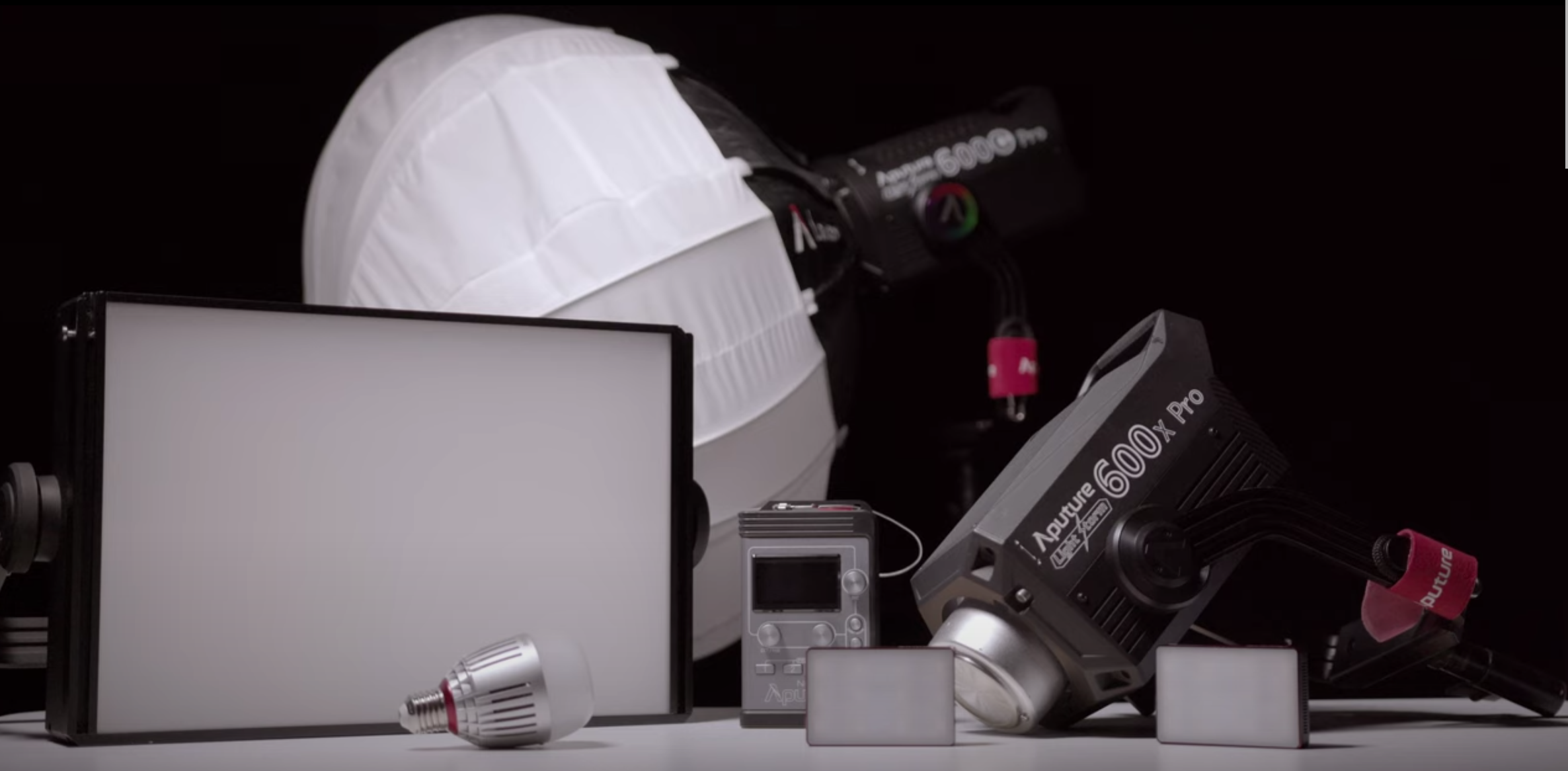
Lensrentals carries a lot of lights. In fact, if you combine strobe and continuous, lighting is our fastest-growing product category. And our fastest-growing manufacturer within that product category? That’d be Aputure. In just a few years we’ve gone from a single Aputure product to over two dozen. And while this massive increase in selection is great for us, it can be difficult to choose between so many options. We recently tried to make that decision process a little easier by releasing a video guide explaining the differences between a few of our most popular Aputure lights. I figured even more detail might be helpful, though, so here’s an expanded version of our selection guide for Aputure lighting.
Aputure Accent B7c
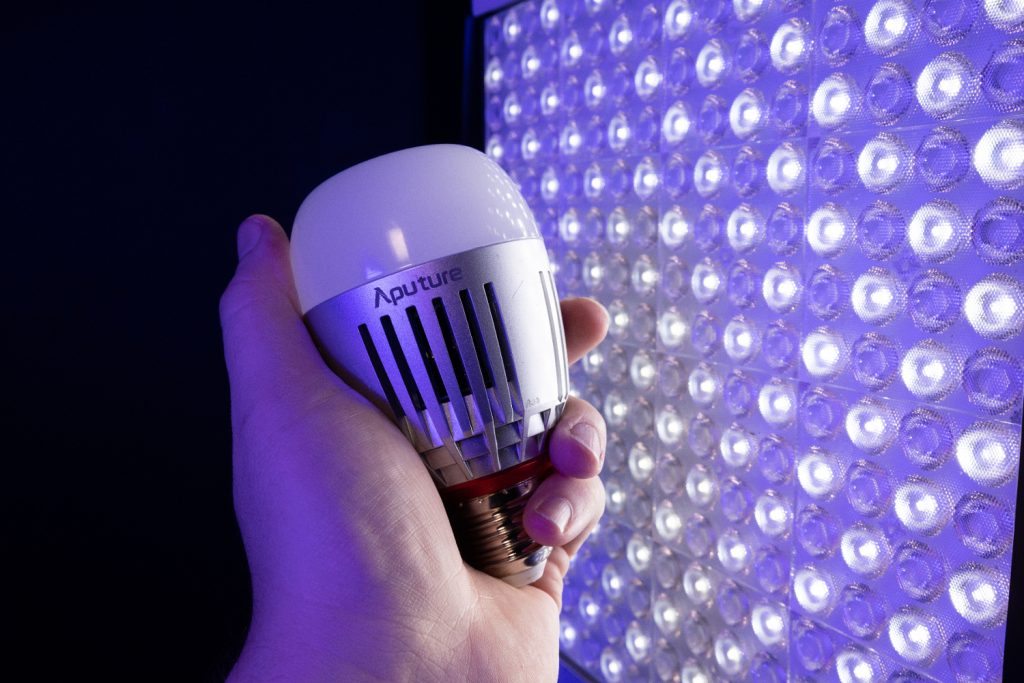
This is the smallest light in Aputure’s lineup, but, for a certain type of shooter, it could be the most versatile. It’s so versatile, in fact, that I wrote a whole blog article on it. If you don’t want to read 800 words on one light, though, here’s the gist of it: the B7c is designed to replace practical bulbs. If you find yourself shooting on location with a lamp that doesn’t match the color temperature of your scene, you can just swap it out for a B7c and control the color temperature yourself. At maximum brightness, it’s the equivalent of about a 50-watt traditional light bulb. For more creative setups, the B7c also features a full RGB range controlled wirelessly, like nearly all the lights on this list, by the fantastic Sidus Link app. We rent the B7c either individually or in an 8-light kit that includes a charging case. Either setup is affordable enough that I’d recommend throwing one or the other on an order just to have it on hand if you know you’re going to be doing a lot of location shooting.
Aputure MC
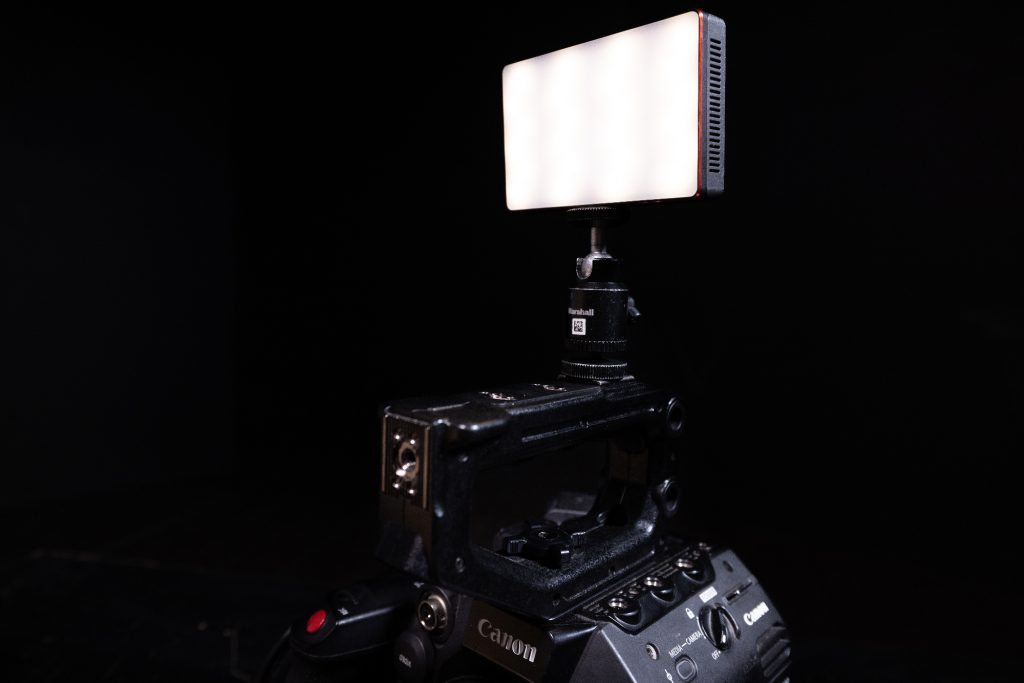
The next step up in terms of brightness and size, the Aputure MC is an internal battery-powered panel light a little larger than a deck of cards. Maybe think of it as the size of a deck of tarot cards. Like the B7c, it features full RGB functionality and is controlled either onboard or wirelessly via the Sidus app on iOS or Android. Unlike the B7c, though, the MC is large and bright enough to actually use to light a small scene. Offering about 400 lux half a meter away from a subject, the MC could be a capable on-camera light for ENG-style shoots or a pocketable fill for something more traditional. Our rental packages include a rubber diffuser and a hot shoe adapter to further accessorize. Finally, and again like the B7c, we offer the MC either as an individual rental or as a kit. Qi wireless compatibility makes multiple lights simple with the case included in the 4 and 12-light MC kits.
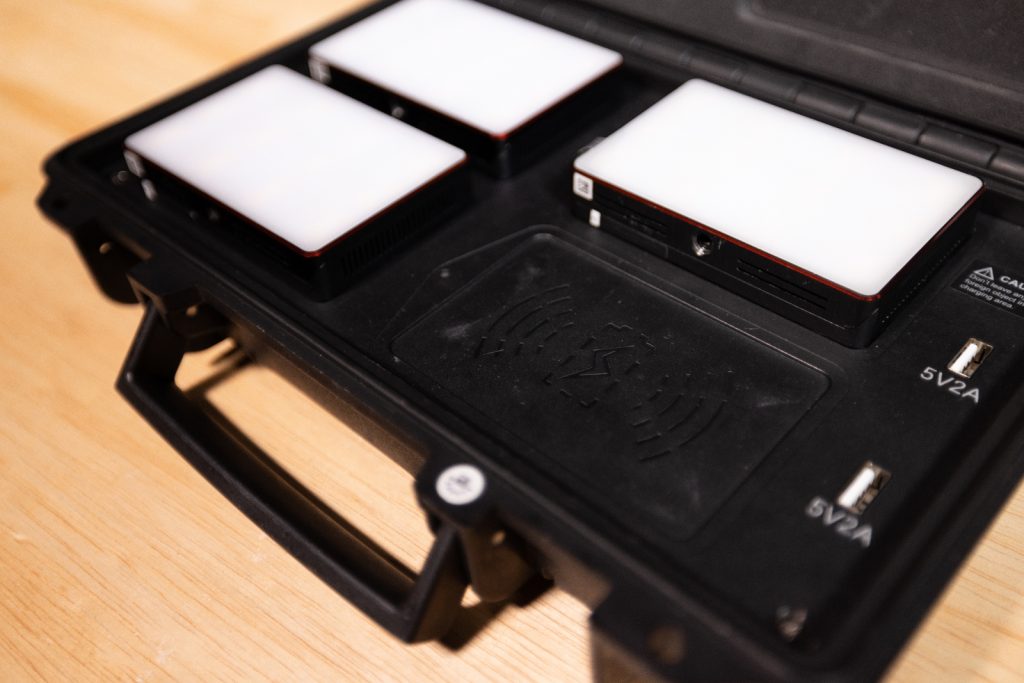
Aputure Amaran
We carry two different models in Aputure’s expansive Amaran line, but, to save word count, I’m going to quickly get to the point and recommend that not rent these lights. They were some of the first Aputure lights we picked up and, in my opinion, they’ve been supplanted by better options. However, given that Amaran AL-MW is magnetic, dustproof, waterproof up to 33 feet, and, most importantly, cheap. I could see a use case for purchasing one. If you do daytime action videography on a small budget with, say, a GoPro, I’d definitely recommend taking a look at our Keeper prices on the AL-MW. Otherwise, other lights on this list are probably a better fit.
Aputure Nova
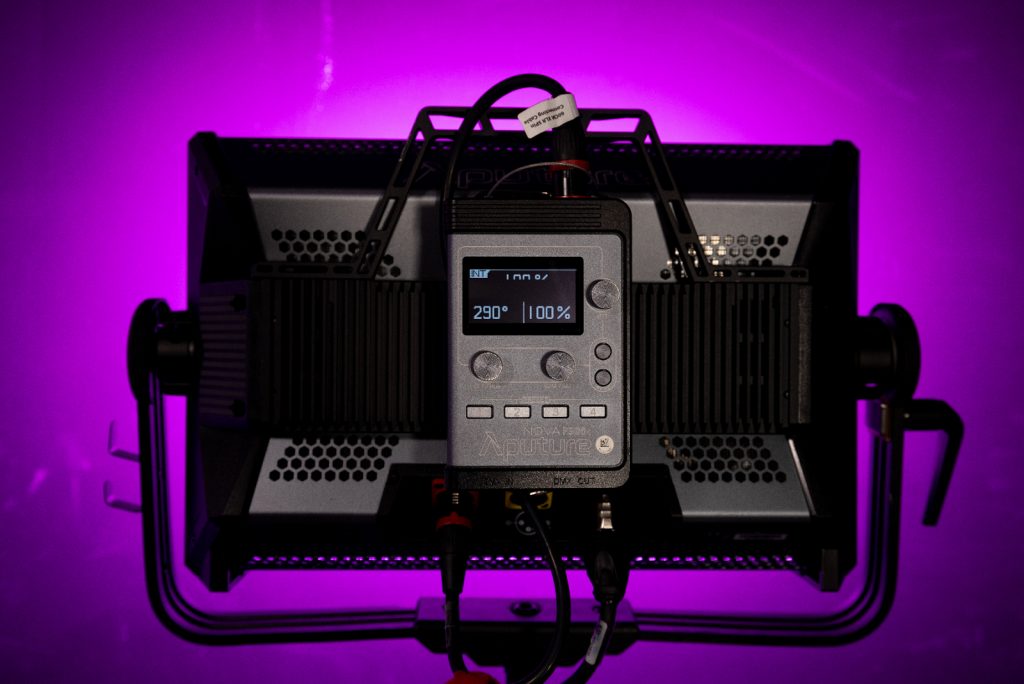
If you’re familiar with either the Litepanels Gemini or the Arri SkyPanel, it’s easy to see where the Nova fits in Aputure’s lineup. Basically, it’s a large panel light with a built-in diffuser to make it a little soft right out of the box. In lighting industry terms, this type of light is often referred to as a “soft panel,” and the Nova line is some of the best available for the money. We carry two different sizes, the P300c, and the P600c, which are nearly identical in their feature set. They primarily differ in brightness and size, and the P600 includes multiple light engines, allowing it to display more than one color at a time. Both the P300c and P600c feature an RGB-capable panel with either wireless or onboard control, 95 CRI for color accuracy, and a plethora of built-in gel settings and effects. One thing I love about the Nova is that the control box is wired DMX. If the light is, for example, on a high stand, the 10-foot DMX cable makes it easier to change settings from the ground.
The P300c outputs a maximum of 9000 lux at 1 meter, and the doubly large P600c outputs 17,500 lux at the same distance, making these some of the brightest panel lights in our inventory. One thing to note, though, is that with great power comes great responsibility. These are not travel lights. The P300c is 23 pounds, and the P600c weighs in at over 30. To be safe, you’ll want to put them on combo stands (as opposed to simple light stands or c-stands) and make sure you sandbag them.
Aputure LS Series
Here’s where the lineup starts to get a little confusing. We’re out of the small, specialty lights now and into Aputure’s more studio-focused stuff. They make lights to support a wide variety of needs, but the wealth of options can make it a little difficult to determine which models have which features. To simplify things a little, the LS (Light Storm) series are all single-point LEDs with varying degrees of brightness and color temperature variability. The different numbers and letter suffixes in the product names: 300, 600, D, X, etc., are just shorter ways of denoting these differences.
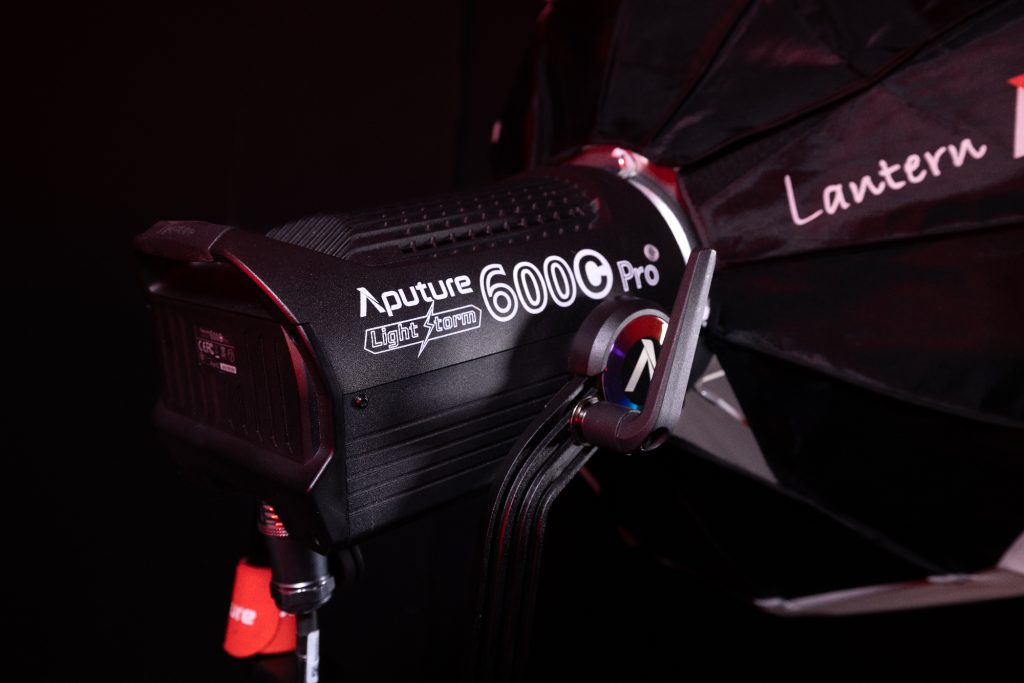
So, we’ll begin with the LS 300X. Compared to the 600 and 1200 models, you won’t be surprised to find that this is the dimmest of the bunch, around 800 lux at three meters. The “X” is there to let you know that this is a bi-color light, meaning you’re able to select your preferred color temperature from a range of 2700 to 6500K. In contrast, our other LS 300 model, the LS 300 C300d II, only has one color temperature, 5500K. “D,” in this case, stands for “daylight.” If you want to change the color temperature on the LS C300d, you’ll need to use gels as all the cool older gaffers use. That limited flexibility, though, comes with some added power. The LS C300d II is about three times as bright as the LS 300X.
Those same number and letter conventions then continue through the rest of the LS line, and we carry Aputure’s next-brightest LS light, the LS 600, in even more variations than the LS 300. In order from least color options to most, you can choose between the LS 600d (daylight only), the LS 600X (2700K to 6500K), or the LS 600c (full RGB), all 3-5 times brighter than their LS 300 counterparts. Each of those models, and the LS 300 models, are also available from us battery-powered in gold mount or v-mount configurations.
Finally, we arrive at the brightest light in the LS series, in fact, the brightest in our entire inventory, the LS 1200d. “D,” again, is for “daylight,” here. The 1200d is a non-tunable 5500K. Also, the 1200d is, frankly, bright as hell, approximately 83 thousand lux at 3 meters with the narrowest reflector on. In terms of output, it’s comparable to a 1600-watt HMI. Now, the 1200d won’t do this to you because of the color spectrum on LEDs, but, just as a fun aside, an unprotected 1600-watt HMI is powerful enough to pretty quickly give you a sunburn. I know this from unfortunate experience. This is the light you’ll want if you’re trying to mimic sunlight through a window, for example.
Since these are all single-element lights, users will almost always want to modify them with a reflector or softbox of some kind. Aputure makes a handful of reflectors of their own, and a Bowens mount on every light in the LS line makes using third-party modifiers super simple. Just make sure not to stare directly into that 1200d.
I hope this helps clear up some of the confusion around our wide selection of Aputure lights. As always, if you have any questions, we’re here to help at 901-754-9100 or support@lensrentals.com. If there are any other manufacturers whose product lines could use some clearing up (looking at you, DJI), feel free to let us know in the comments.
Related Reading
- Comparing Studio Strobes and Constant Lighting for Photography
- How Your Flashtube Position and Shape Changes Your Light Quality
- Five Lighting Diagrams to Get You Started in On Location Lighting
- Comparing the Profoto B1X to the Profoto B10 & Profoto B10 Plus
